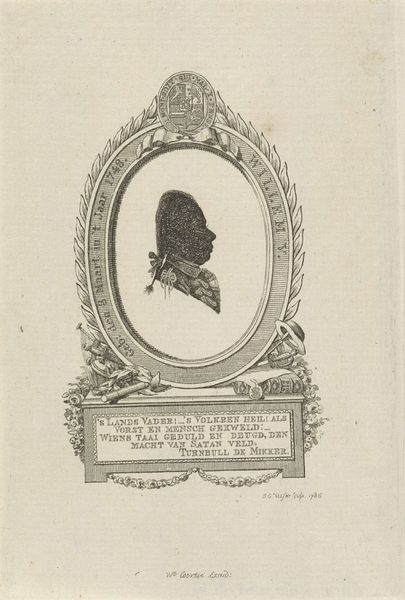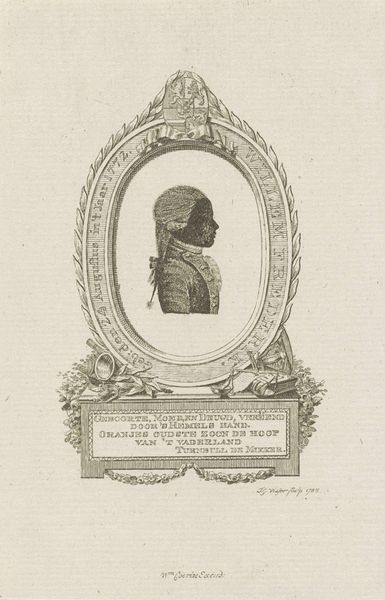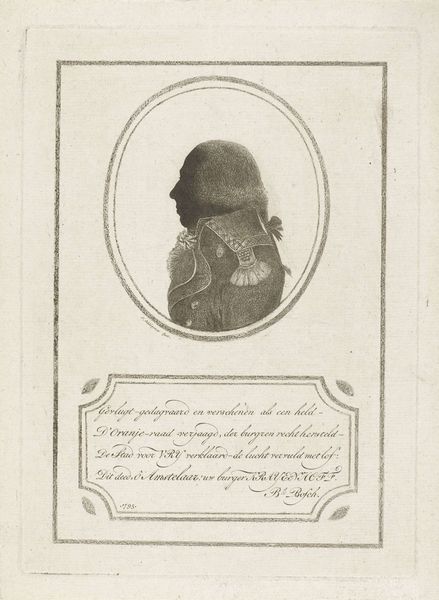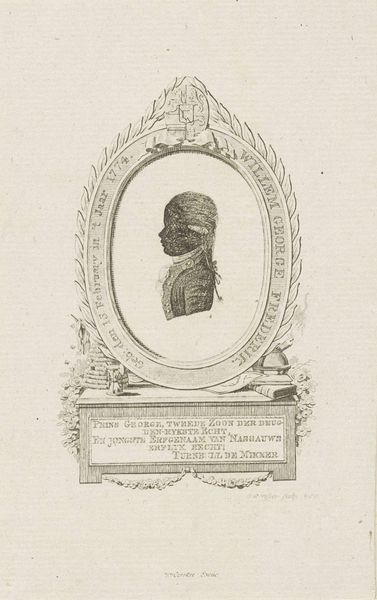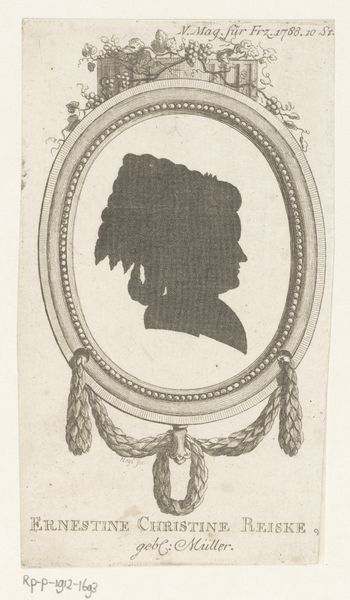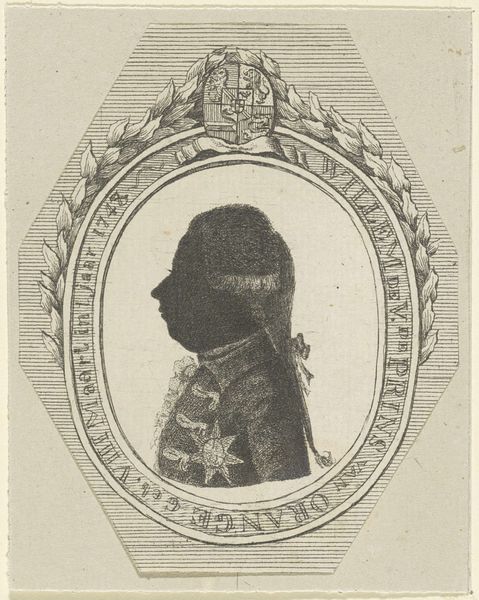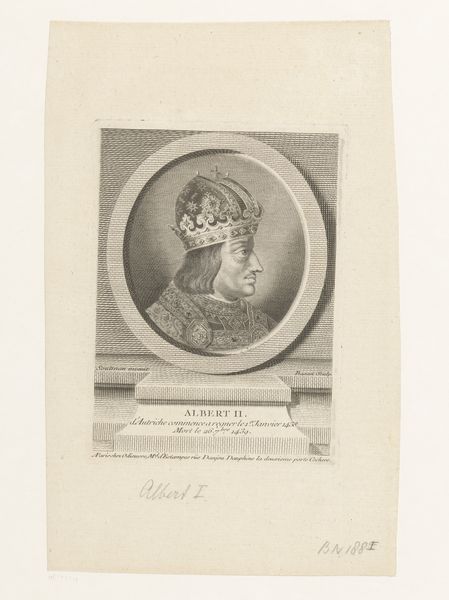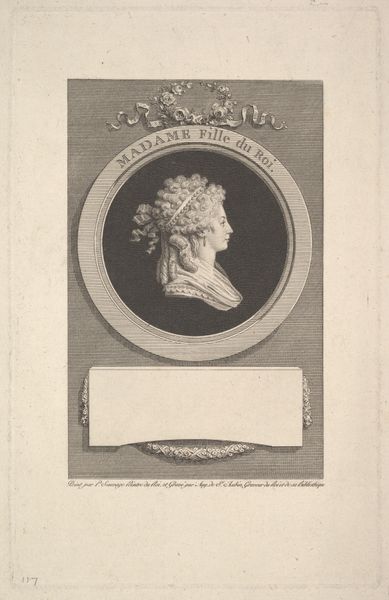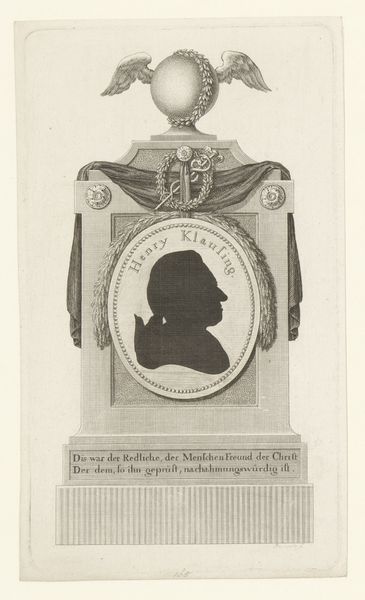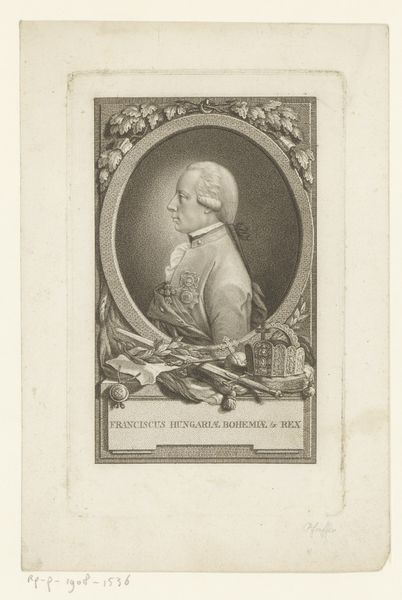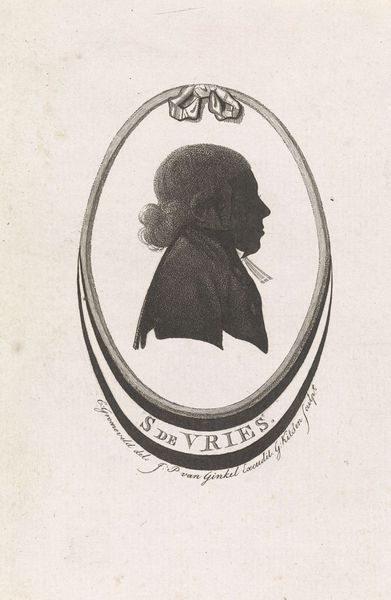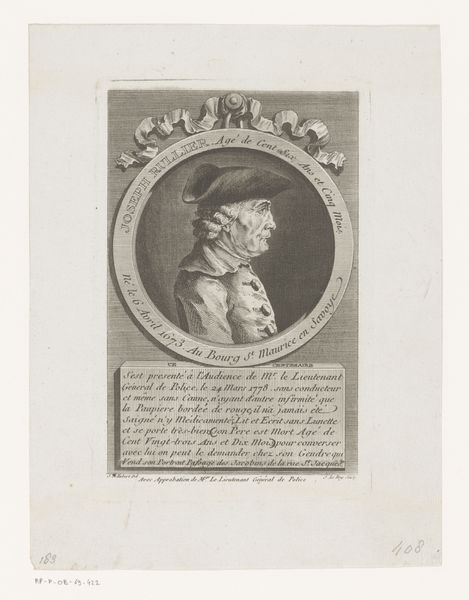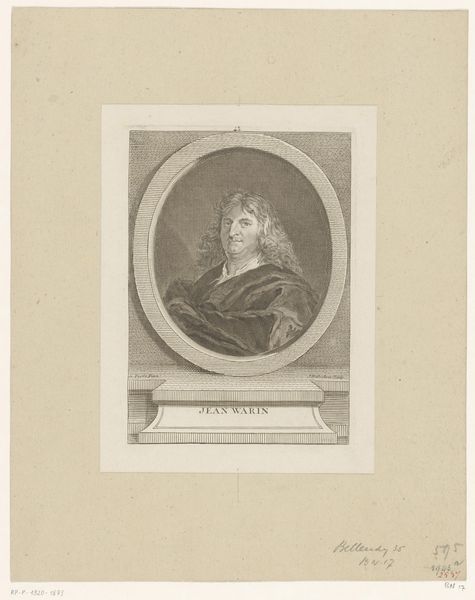
print, engraving
#
portrait
#
neoclassicism
# print
#
pencil sketch
#
old engraving style
#
pencil work
#
engraving
Dimensions: height 148 mm, width 94 mm
Copyright: Rijks Museum: Open Domain
Editor: Here we have a silhouette portrait of Louise, Princess of Orange-Nassau, created in 1785 by Jan Gerritsz. Visser. It's an engraving, very delicate, almost fragile looking. What's your take on it? How do you interpret this work? Curator: This delicate engraving speaks volumes about power, gender, and representation in the late 18th century. The silhouette, a popular format at the time, ironically flattens Louise, reducing her to a symbol, while simultaneously highlighting her aristocratic status through elaborate hair and attire. What does it mean to contain a powerful woman within such a prescribed, almost constricting, visual framework? Editor: So it's more than just a pretty picture. It's saying something about the Princess's position in society? Curator: Precisely! Consider the socio-political context. The House of Orange-Nassau faced increasing challenges to its authority. Images like these functioned as carefully constructed propaganda, projecting an image of strength and virtue. But also, consider the limited agency women had at the time. How might Louise, a figurehead in a patriarchal society, have navigated her identity? Does the very *silhouetting* erase certain individual aspects while amplifying those deemed politically expedient? Editor: That's interesting – I hadn't considered the political angle at all. So it is both an act of celebrating a woman in power but at the same time enforcing stereotypes. Curator: Exactly. We must also remember the Dutch Republic at this moment of crisis, economic difficulties, and looming war. The "virtue" described in the caption implies also, an important element of this moment and perhaps of the House of Orange-Nassau. By examining seemingly simple portraits like this one through the lens of feminist and historical theory, we start to unpack layers of meaning. What do you think the purpose was? Editor: It makes you rethink assumptions about portraiture in general! Curator: Agreed, understanding these kinds of elements of political context encourages us to interrogate not just *what* we see, but *why* and *how*.
Comments
No comments
Be the first to comment and join the conversation on the ultimate creative platform.
